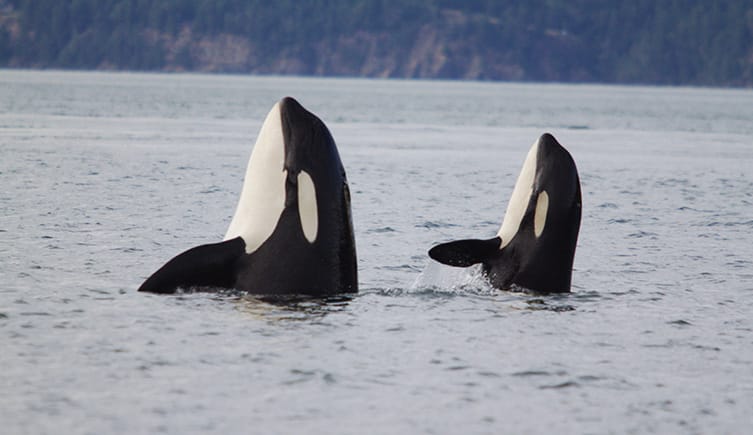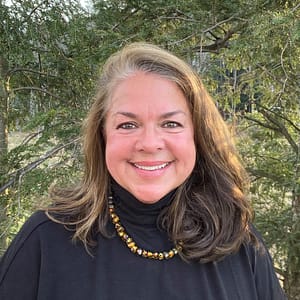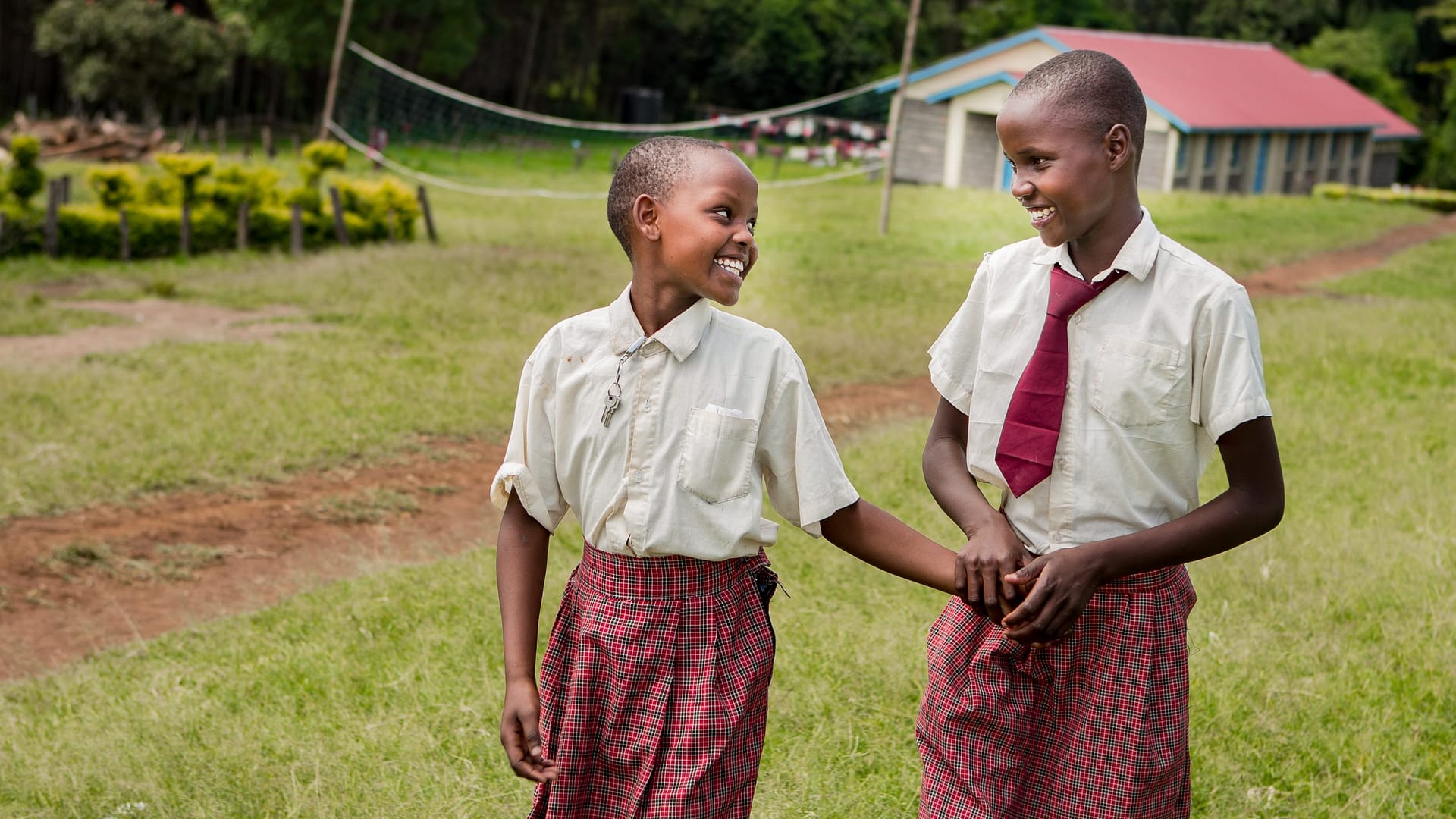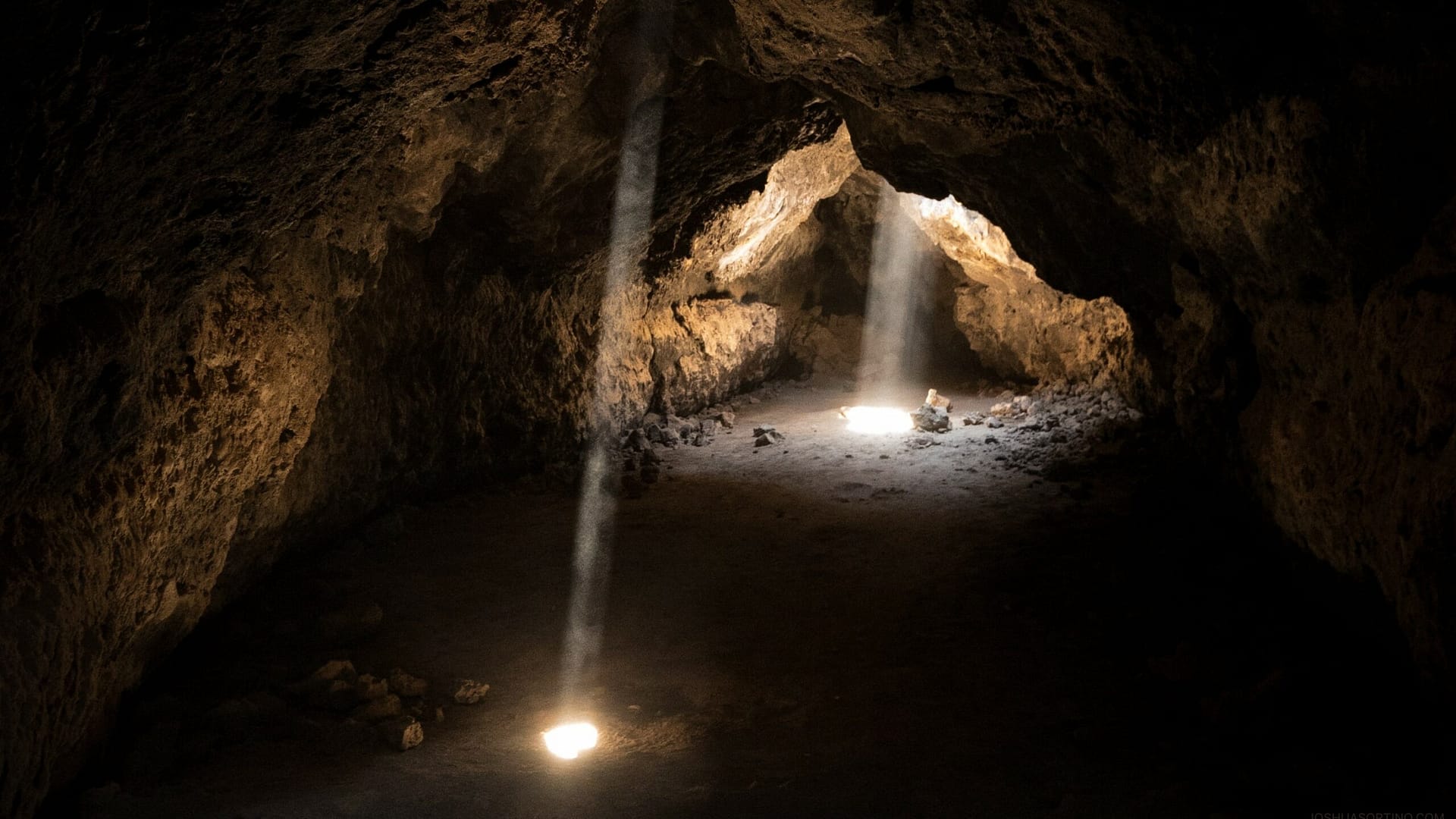This article was originally published May 6, 2019, and is re-published today in memory of Ken Balcomb, Founder of the Center for Whale Research and a wonderful resource for this article when it originally published in 2019. (Learn more about Ken at the end of this article.)
Have you known the love of a wise older woman? Perhaps a grandmother who you can count on in your best and worst moments. It turns out that humans and killer whales have evolved to count on their grandmothers in similar ways. Now, we have the opportunity to help five grandmother killer whales save their families!
When you think of Killer Whales (Orcas), I’m guessing what first comes to mind isn’t, “Hey, we’ve got so much in common!” But when we learn about their communication, family bonds, and the grandmothers who lead them through the hard times, it all feels eerily familiar.
In the Pacific Northwest, off the coasts of the United States and Canada, killer whale pods are finding it increasingly difficult to survive. Read on to learn about their amazing family structure and how we can help them make a comeback!
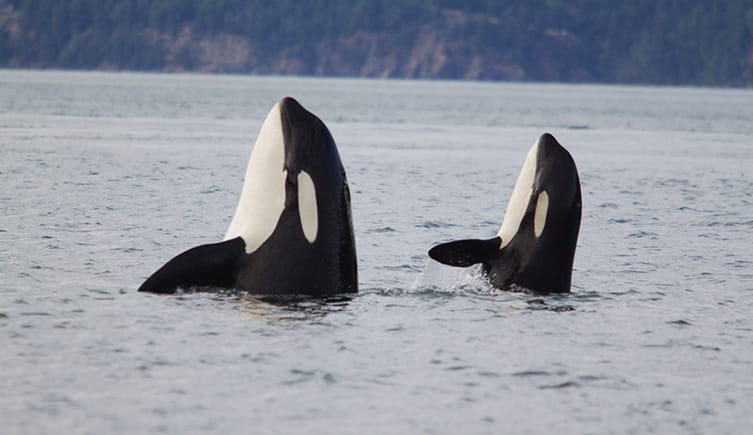
In this article, I’m going to tell you a marvelous tale of wonder and possibility. It has all the elements of an epic parable: a breathtaking setting, plot twists, likable antagonists, the inevitable conflict, and the possibility of a happy ending.
The resolution to this story is unfolding as we speak… and you can be a part of it!
The Setting of this Man-Made Drama
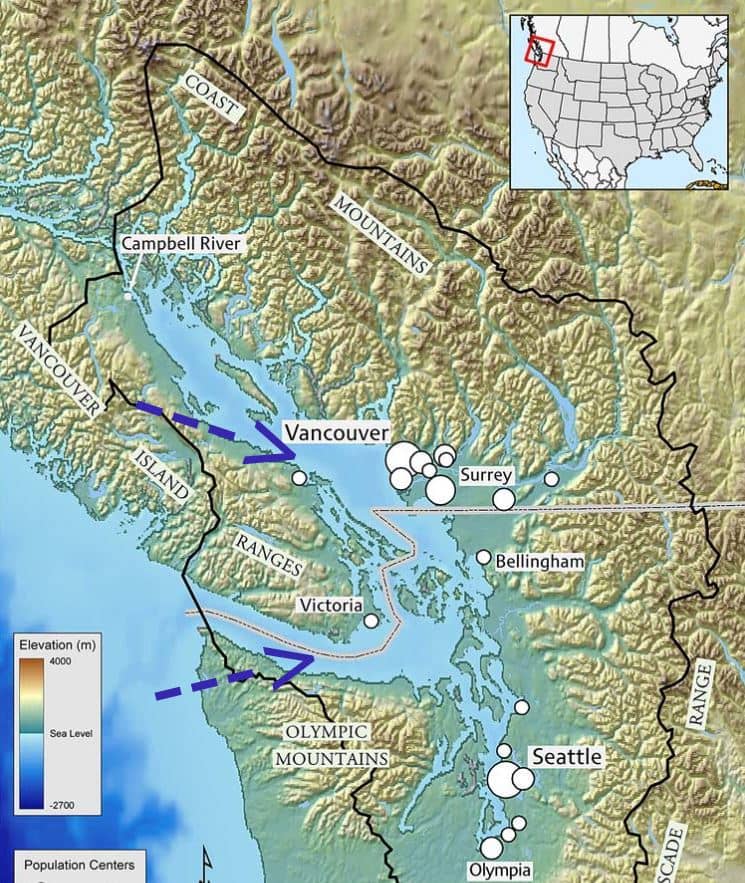
This tale of challenge and opportunity is set in the stunning waters of the Pacific Northwest that includes the Salish Sea: the sparkling, island-dotted, culturally rich waters that lap at the shores of both Seattle and Vancouver. Evidence of human inhabitation, people building their lives around the rich biodiversity here, dates back 8,000 years.
And to add to the elevating feeling that this seascape evokes, it is bound on all sides by magnificent mountains, rainforests, and the thriving modern communities of two separate countries.
The Lead Characters in Our Story
There are two groups that both need the Salish Sea to quickly recover from years of pollution, overfishing, and unbridled vessel traffic: the people of the region and the remaining resident killer whales that make their home for a good part of the year in those waters.
8 million people live within the watershed of the Salish Sea. Their traditions, livelihoods, and peace-of-mind rely on the health of the water networks there.
In the waters there, 75 resident killer whales live in three distinct family groups that scientists refer to as the J, K, and L pods.
Of course, both the people and the whales are impacted by the health of the ecosystem. But to fully appreciate that impact, there’s a fascinating back story here that points to our instincts for acting with courage and foresight—that is, once we understand how much we have in common with the animals that share our planet with us.
So, let’s begin!

Killer whales are the largest member of the dolphin family with a diversity of ecotypes around the globe. The ones that live in this part of the Pacific Northwest have evolved into three distinct ecotypes, only distinguishable by what they eat! (And no, humans are not on their menu.)
There are the”resident” killer whales of the Salish Sea that eat only fish. Then there are the “transient” killer whales that roam great distances eating marine mammals. And a third ecotype lives off-shore, mainly eating sharks.
Their enormous brains may challenge our own capacities for communication, emotion, and memories. And that’s where the similarities start to get a little uncanny.
Turns out, just like humans, killer whales communicate with a vocabulary of sounds that can only be understood by members of their part of the world, and it can even branch off into distinct family dialects. By using clicks and whistles, each of the three ecotypes of killer whales has developed their own “mother tongue” that appears to be completely foreign to the other two.
And then, of course, there’s the way your grandmother is like a killer whale.
As far as we know, out of all the species of animals on our planet, only humans, killer whales, and 3 other species of toothed whales go through menopause. With their reproductive years over, both human and killer whale grandmothers are free to look after the entire family’s well-being. Just as we do, they provide food and pass down their years of wisdom.
They even have the same life expectancy as we do, about 80 to 100 years, and their child-bearing years are almost exactly the same as ours: ages 15 to 40.
The “Grandmother Theory” proposes that these similarities in our social structures might be a big advantage to survival.
Let’s get up to speed on this fascinating bit of connection between your grandmother and the three magnificent families that call the waters in the Pacific Northwest home with this great video from TED-Ed! Behavioural Ecologist, Darren Croft, gives his input:
Any of that really ring a bell? Before this video, I had no idea we could relate to these animals with such ease!
A pod contains multiple families (matrilines), so essentially it’s a family of cousins, with several grandmothers using their wisdom to keep the whole group healthy and happy.
It’s her wisdom that sees them through the hard times.
“In earlier studies of lifespans of killer whales it was found that when their mother dies, adult males have something like an eightfold likelihood of dying in the next couple of years. This is because they are so reliant on their mothers to show them where to find food.
“It’s quite common to find massive males over 30 years of age still living and swimming with their mums. And in the research we are doing now, we are finding a similar trend with grandmothers.
“In times of abundance, killer whale hierarchies are usually fluid and see regular leadership exchange. But when times get tough, and salmon are scarce, the pod will always turn to the oldest female to lead.” 3
– Dr Sam Ellis, University of Exeter
And what about the fact that a grandmother resident killer whale will share more than 90% of the fish she catches with her family?
Now that sounds very familiar too! How many human families do we know where the matriarch—mother or grandmother—is making most of the self-sacrifice for all the people in the household?
How many human grandmothers around the world are raising their grandchildren out of necessity, and doing a darn good job of it? What about the women of years who are looking out for the common good by leading great companies to more sustainable business models? (Did you know that companies score 13% higher for “social responsibility” if they have a CEO who is a woman with daughters?)
How often do we turn to a wise elder woman when our own insights fall far short of solving our problems? Think of your own grandmother, or women like Maya Angelou, Madeleine Albright, or Jane Goodall.
Here’s a piece from New Zealand’s 1 News that demonstrates the remarkable grace and wisdom of a woman of years, and the gentle curiosity of these giant relatives of ours. (Expand this video to full screen to really understand the wonder of what’s going on here!)
Thought-provoking, huh? The words “stunningly beautiful”, “admirable”, and “almost other-worldly,” also come to mind.
There was something in that video that seemed perfectly fitting for this point in our story. Judie Johnson’s sense of joy made me wonder if I would ever have the presence of mind and grace to go back out into the water and continue swimming as she did.
There’s something about a wise older woman.
Here’s Where the Plot Thickens…
Just as the grandmother resident killer whales pass down the important knowledge and behaviors through generations, those traditions can limit their ability to be flexible in coping with the changes we humans have made in their home waters. Take their food source for instance.
The resident killer whales of the Salish Sea only look at one kind of fish as a primary food source. 90% of their diet is the Chinook salmon, and unfortunately, it is also designated threatened or endangered.
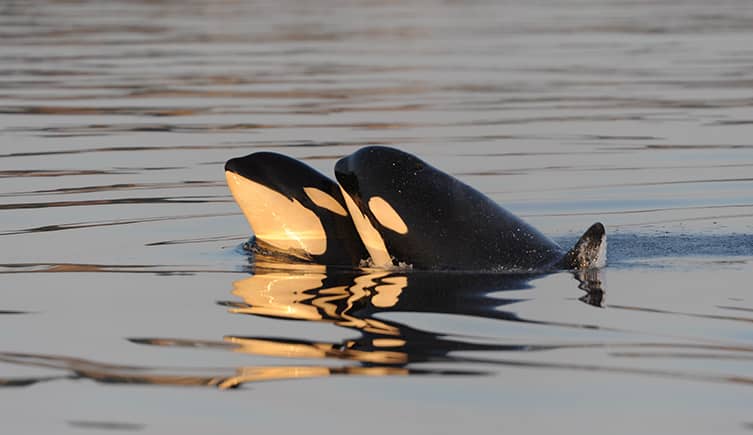
It’s true that they face other challenges like water pollution and boat traffic, but the problem of falling Chinook salmon populations—stemming from man-made changes to salmon habitat—is at the core of the urgency here.
Chinook salmon were once abundant in these waters, often weighing over 100 pounds, but now the fish are scarce and less than 40 pounds, most commonly 12 to 15 pounds. Because of this, the whales may be heading for extinction.
These resident killer whales are essentially starving to death.
Their birth rate is not keeping up with the death rate. According to the Center for Whale Research, “approximately 75% of newborns in the recent two decades following designation of the Southern Resident killer whale population as ‘endangered’ have not survived, and 100% of the pregnancies in the past three years have failed to produce viable offspring.” 5
Even the timeless wisdom of the killer whale grandmothers is no match for a fundamental lack of food.
Here’s a very well-done, short news brief from CBC News that puts the issues succinctly, as they follow the story of one grandmother orca known as J17.
For all you could ever want to know (and more) about killer whales, and this specific population, hop over to the wonderful website of The Center for Whale Research. They’ve been studying these animals every day since 1976! Once there, I’m certain you’ll be inspired and will appreciate their Take Action page.
The Dam Conflict Points to Hope
Turns out, there is a remedy to this situation!
To make a truly meaningful improvement in Chinook salmon populations would require the removal of 4 dams on the Columbia and Snake river systems. They are past their prime, required vast resources to maintain, and no longer serve their original economic mandates for inexpensive hydroelectric power and grain transportation.
The Northwest Power and Conservation Council states that “more than 55 percent of the spawning and rearing habitat once available to salmon and steelhead in the Columbia River Basin is permanently blocked by dams.” 7
“If those dams could be breached, we would see up to a million more Chinook Salmon in as little as 3 years.”
– Ken Balcomb, Center for Whale Research
Imagine the impact this would have on orca populations!
Unsurprisingly, this has become a hotly debated option. Luckily, there are people who are committed to finding the courage to affect this important change. In fact, 740,000+ people of the region have signed the petition: “Dammed to extinction, Southern Resident Orcas are starving” that supports dam removal.
Here is a link to a website that is the best way to quickly get up to speed on why these dams are past their prime and the logic is very simple. Dam Sense: The Lower Snake River.
I had no idea that dams change ecosystems so dramatically. But this truly beautiful video from Patagonia really put it in perspective for me.
I never appreciated the logic until I saw this piece. Here’s a winner!
So where are the heroes?
As in all the world’s most vexing problems, the answer to that question depends on your perspective. The heroes and the villains reverse roles depending on the perspective of the narrator, the person telling the story.
And it looks like that’s what’s happened in the problem-solving efforts so far on this.
In March of 2018, Gov. Jay Inslee of Washington State created the Orca Recovery Task Force and brought together four dozen people to come up with a plan: politicians, scientists, boaters, farmers, fishermen, tribe members, reps from industry and shipping.
Compromise after compromise was made in those negotiations. Unfortunately, despite all the good intention of everyone involved, it produced a plan that is so watered down that it falls far short of the immediate action needed. And if that wasn’t challenging enough, remember that the Pacific Northwest and the Salish Sea have shores in both the U.S. and Canada! All those same interests have to be satisfied on both sides of the border. (Here is a wonderful website to learn about the issues on the Canadian side of the border: RainCoast.org)
The bottom line: killer whale experts say we have missed the window of opportunity for “compromise.” Science indicates that is all too little, too late.
With every year that passes, the grandmother resident killer whales hang on, just as any wise older woman would do in our own families; keeping at every possible opportunity until their last breath.
And yet another, court-ordered, 80 million dollar study is underway, with the report due in February 2020. It seems the perfect example of kicking the can down the road.
If you’d like to see an amazing piece of solid journalism that will give you a full understanding of the challenges, take a look at a Q13 TV special news report done by Simone Del Rosario: The Last Generation: Southern resident orcas in danger of extinction.
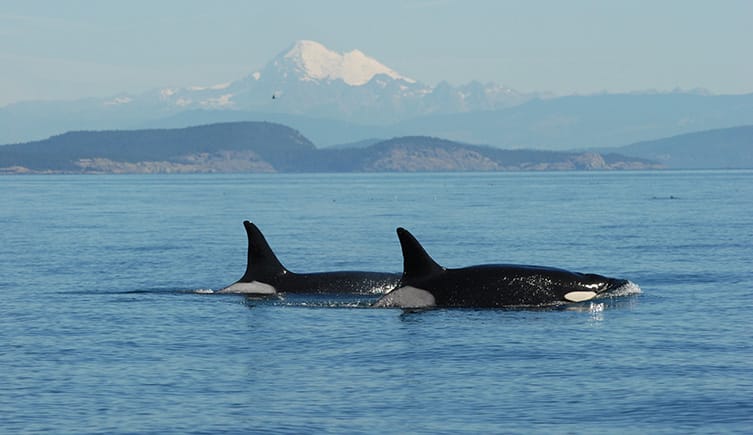
© David Ellifrit || Courtesy of the Center for Whale Research
This story only has two possible resolutions:
One option is to do what’s necessary to save the whales, thereby restoring major aspects of the marine habitat in that corner of the world for the long-term benefit of both populations, human and fish-eating killer whales.
It will take the political will to do what many people know is the only sustainable solution: breach the dams.
The hope is that the remaining grandmother killer whales can keep their families alive until Chinook salmon populations have a chance to recover.
The second possible outcome here is deeply disappointing. We could stand by and watch the whales die, one by one.
But here’s what makes that ending to this story especially tragic: every one of these remaining animals has been given a name (a scientific I.D. like J17 or L55) and we have studied them extensively since the 1970s. We know an awful lot about each whale’s individual life history, their health status, their relationships, and their unique personalities.
Here’s why this story is such an emotional cliff hanger. These intelligent, magnificent beings may be the first group of animals that we will knowingly cause to go extinct. Heartbreakingly, while knowing each individual by name.
That notion gave me great pause when I really thought about it.
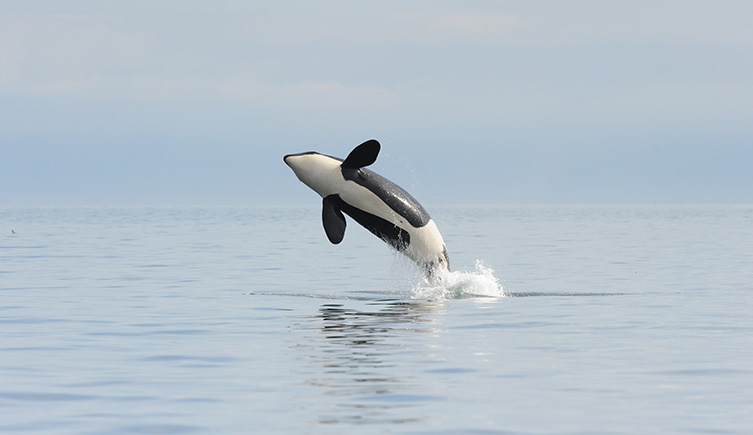
What’s in a Name?
Killer whale communication plays a big role in the strongest ethical argument for saving this species.
Killer whales share a dialect (a regional language) with neighboring groups and they socialize with nearby families. How cool is that? There seems to be a “culture” that originates from this complex language. And it determines behaviors like passing on knowledge, like food selection and response to stress.
“Culture?”, you might ask?
I know. I thought culture was a human thing. Yet that’s how we can best appreciate the depth of our kinship with the last remaining 75 resident killer whales in the Salish Sea:
They have culture.
Yes, no matter how you slice it, if you look at Merriam-Webster’s the definition of “culture”, killer whales cover all the bases:
culture noun cul·ture | \ ˈkəl-chər
a: the set of shared attitudes, values, goals, and social practices shared by in a place or time
b: the integrated pattern knowledge, belief, and behavior that depends upon the capacity for learning and transmitting knowledge to succeeding generations
And that second definition is where the grandmother whales seem to play a key role in preserving culture, just like our own graceful elder women tend to do.
It is often the grandmother killer whales in each pod that are the purveyors of knowledge and the driver of behaviors.
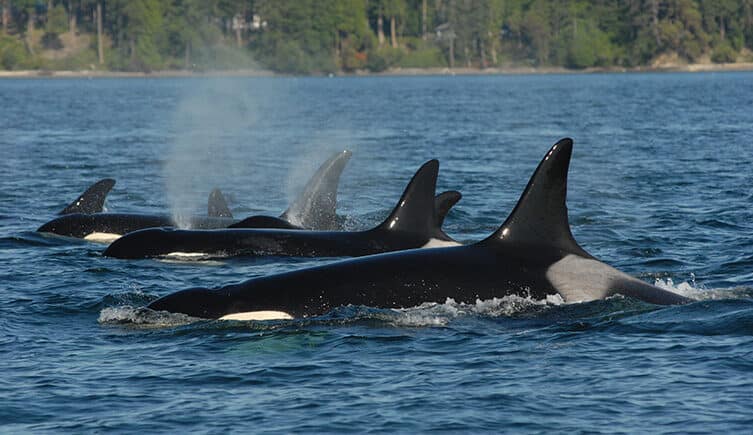
Granny (front) with her pod
© David Ellifrit || Courtesy of the Center for Whale Research
We know their family stories and now we know their names; like J2, nicknamed “Granny”. She was the longest living killer whale known to science and was estimated to be over a hundred years old when she passed in 2016.
But Oreo, Mike, Spock, Cappucino, Comet, Marina, Finn, Windsong, and the rest survive her and continue to inspire hope and action in those who have come to know them. 9
Communication Works!
So here’s the good news:
Don’t forget that we have a real success story to look back on. Public input has changed the course of history before. And serendipitously, killer whales happened to be at the epicenter of that challenge too!
You may remember when CNN broadcasted the documentary called “Blackfish” in 2013, which exposed the inhumane treatment of captive killer whales in theme parks like Sea World. It was an amazingly well-done piece of journalism. People immediately felt our connection to these creatures and the story spread around the world.
Millions of ordinary people made it clear they supported the more humane treatment of killer whales. And after 1.2 million signed a petition. Park visits fell. Sea World’s stock price dropped 60%. 10
By 2016, public pressure was enough to cause Sea World’s leadership to announce it was abandoning their captive breeding and killer whale shows. And in 2 years, their stock was up 118%. 11
The web was used to bring progress to all and it was a win/win situation for everyone that punctuated the news cycle. And it couldn’t have happened without the simple input of thousands of humans.
This story of the resident killer whales of the Pacific Northwest is a prime example of how knowing more about seemingly random wonders in our world, can make us far better decision makers.
The more we know, the more a whole new set of facts and connections can inspire us to make elevating (often difficult) decisions with confidence for the long-term.
And it’s stories like this that point to the promise of making hard decisions with a vision of what is possible for our shared futures. That’s how all human progress has been made. Someone courageous made the hard call.
“If you define the problem correctly, you almost have the solution.”
– Steve Jobs
Maybe it’s time to reframe the problem here. Finding a solution so that, in the long run, everyone making the hard call to breach the dams is a hero.
What if we stopped fighting over fish and killer whales and just asked ourselves:
What should we do with 4 aging dams, that were built in the 1950s to 70s, to facilitate shipping and hydroelectric, and now cost billions to keep up, despite the dramatic decline in their usefulness?
The stats are clear: their most useful and cost-effective years are passed. Declining due to enormous progress in the transportation and energy sectors. It’s not a question of whether to remove the dams—it’s a matter of when.
Why not breach the dams in 2019? Why not move us on to the future where the heroes will be the courageous leaders who act with foresight?
Those “stats” I refer to are easy to find from credible sources by doing a google search of “Future of Snake River Dams.”
The focus is the future, not the past.
Shipping on the waterway is in a steadily declining direction. 18 months ago shipping was reportedly down 37% and declining fast. 12 Ironically, the much more cost-effective railroad line runs right beside the river in many places. Bottom line: Taxpayers are losing money to keep the water transport system going.
Hydroelectric needs have shifted dramatically in 30 years, as less invasive renewables energy sources are growing rapidly. That trend will make these dams, from a completely different era, less and less relevant with every passing year. The dams now provide only 5% of the region’s power, nearly all surplus and sold at a loss, and cost taxpayers enormous sums to maintain. 13
After so much research for this article, I was surprised to learn that the Army Corps of Engineers has had an Environmental Impact Statement (EIS) in hand since 2002 which gives them the authorization to put these dams into non-operational status without the authorization of Congress. And yet the circumstances of the quagmire here have led us to spend a billion dollars on the non-breach alternative; an approach with no meaningful improvement for salmon or steelhead. The EIS includes a comprehensive analysis of alternatives for improving salmon passage, and in the end, dam breaching was identified as the alternative that would provide the highest probability of meeting salmon survival and recovery criteria. 14
We can each change the ending to this story!
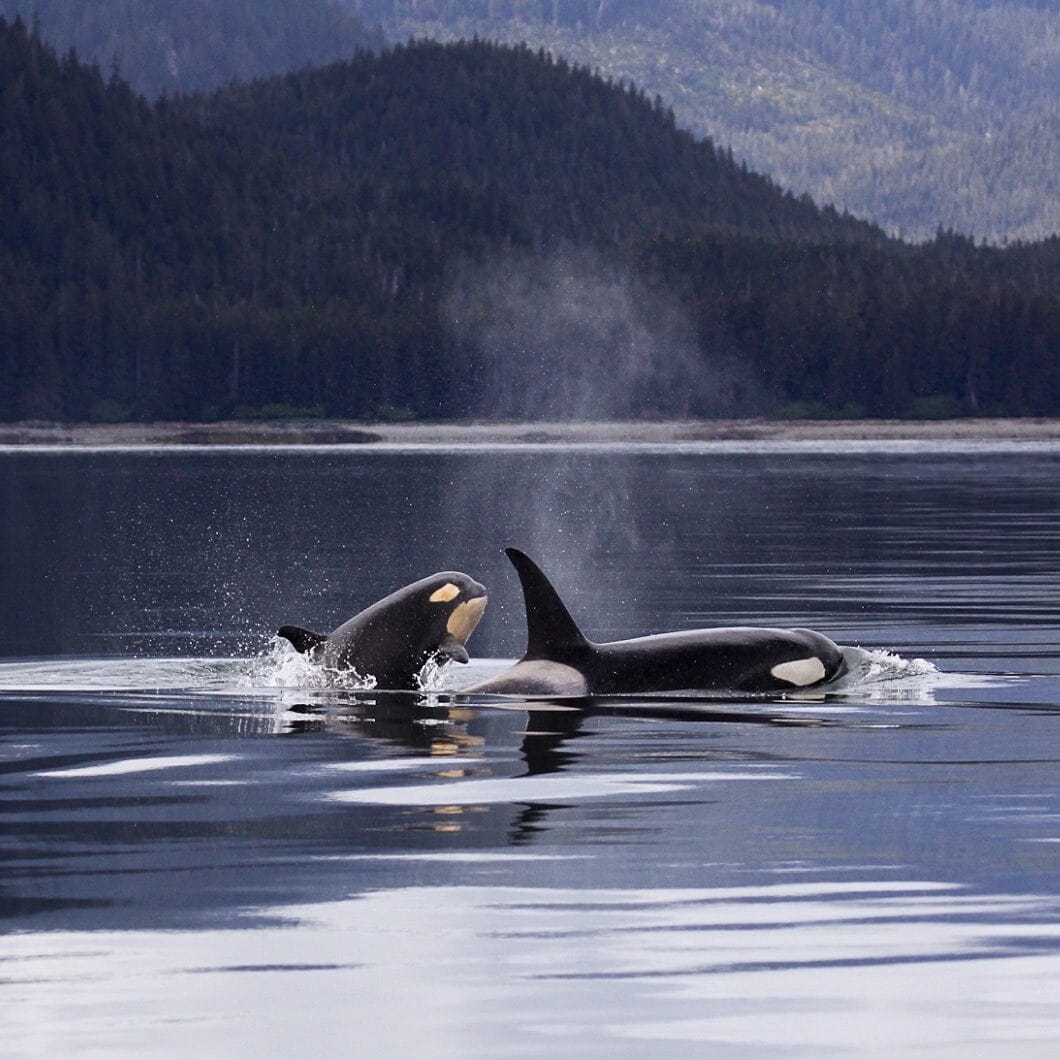
Here’s the insight that is key:
When we watch some of the videos of these resident killer whales, we may grieve with the mother whale, like Tahlequah, who carried her deceased baby for 17 days. (Oh how that video spoke to millions of people!) And we may feel for the grandmother whales who are giving 90% of the food they catch to their family members.
But it’s important to channel that level of emotion into action.
I suspect that the best thing each of us can do is quite simple:
Let the right people know they would have your support if they move to breach the dams.
We don’t need angry messages. Just support and encouragement for leaders to find the courage needed. Leave a brief, positive phone message. Write a short but clear email. Let the key people in a position to make change happen quickly know you are out there. Most importantly, we can reassure them that they will have our support if they make the hard decision here.
Use your voice!
April through August 2023 is a critical time for people to advocate for breaching the Lower Snake River Dams, a major step in the right direction for salmon and killer whales. Right now, breaching the dam could be included in the settlement for the lawsuit National Wildlife Federation v. National Marine Fisheries Services that is currently pending in Oregon should President Biden choose to do so. This could be yet another outlet for dam breach advocacy and advocacy for populations of salmon and killer whales who are nearly beyond being able to recover with their current numbers.
You can send out your support easily with one form by heading to the DamTRUTH website, or you can contact these local officials to voice your further support.
In the end, our diverse short-term interests do not divide us at our core. There are no politics to saving the ocean and waterways that create its richness. It is our place. It is our origins. And our future is intimately tied to its health.
This is an easy issue for each of us to influence. Just pick up the phone and leave a message for each of those influencers. Or drop them a quick, clear email.
In all communication, use the opportunity for good. Post a positive message that you support breaching the Lower Snake River dams and you will support them for having the courage to make it happen.
Stay open, curious, and hopeful!
~ Dr. Lynda
MORE ABOUT THE REMARKABLE KEN BALCOMB, researcher and Orca advocate:
Ken Balcomb‘s meticulous decades–long effort to track a population of killer whales in the Pacific Northwest did much to transform the marine mammals’ image from soulless predators to compassionate creatures worth protecting. It is said that scientists today know more about this particular population of marine mammals than any other in the world, thanks almost entirely to Mr. Balcomb.
He focused his work on a group of whales in and around the Puget Sound. Called the Southern Resident orcas, they numbered about 70 when he began and had grown to about 100 by the 1990s.
His research has revealed more about the social structure of the species, the life stages of individual whales and even sound communication between members. He also raised awareness about these mammals for years, speaking extensively on their behalf to local governments, culminating in the federal government’s designation of the Southern Resident orcas as a distinct population segment in 2005 and initiation of a recovery plan (which we spoke about in this article.)
Even after his death, his legacy lives on through the Center for Whale Research, which he founded in 1981, as well as through the many marine researchers and conservationists inspired by his work. His influence will be remembered for years to come.
Learn more about Ken on the Center for Whale Research website.

Don’t miss out on a single article!
Enjoy unlimited access to over 500 articles & podcast that give you a positive perspective on the state of the world and show you practical ways you can help.
Notes:
- Wonders, Karen. “Coast Salish.” First Nations – Land Rights and Environmentalism in British Columbia, www.firstnations.de/development/coast_salish.htm. Accessed 30 Apr. 2019. ↩
- “Inside the Killer Whale Matriarchy – Darren Croft.” TED-Ed, YouTube, 11 Dec. 2018, www.youtube.com/watch?v=sQpGT1BgdX4. Accessed 30 Apr. 2019. ↩
- Lotzof, Kerry. “Killer Whale Behaviour Shows Granny Knows Best.” Natural History Museum , Natural History Museum , 1 Aug. 2017, www.nhm.ac.uk/discover/killer-whale-behaviour-shows-granny-knows-best.html. Accessed 1 May 2019. ↩
- “Swimmer Who Swam with Orca off Coromandel Beach Describes ‘Life-Changing Experience’.” YouTube, 1 NEWS, 9 Dec. 2018, www.youtube.com/watch?v=RqcOakYskQ4. Accessed 30 Apr. 2019. ↩
- “J35.” Orcas // Killer Whales | United States | Center For Whale Research, Whale Research, 26 July 2018, www.whaleresearch.com/j35. ↩
- “Matriarch Orca at Risk Could Affect Whole Pod.” YouTube, CBS News, 8 Jan. 2019, https://youtu.be/aFXDzsfStHM. Accessed 30 Apr. 2019. ↩
- “Dams: Impacts on Salmon and Steelhead.” Dams: Impacts on Salmon and Steelhead | Northwest Power and Conservation Council, Northwest Power and Conservation Council, www.nwcouncil.org/reports/columbia-river-history/damsimpacts. Accessed 1 May 2019. ↩
- “Free the Snake: Restoring America’s Greatest Salmon River.” YouTube, Patagonia, 30 June 2015, https://youtu.be/Gm290O6Rgr4. Accessed 1 May 2019. ↩
- “Explore The Museum.” The Whale Museum, whalemuseum.org/collections/meet-the-whales. Accessed 30 Apr. 2019. ↩
- Ferdman, Roberto A. “Chart: What the Documentary ‘Blackfish’ Has Done to SeaWorld.” The Washington Post, WP Company, 12 Dec. 2014, www.washingtonpost.com/news/wonk/wp/2014/12/12/chart-what-the-documentary-blackfish-has-done-to-seaworld/?noredirect=on&utm_term=.2b5eba93bb14. Accessed 1 May 2019. ↩
- Munarriz, Rick. “3 Reasons SeaWorld Stock Has More Than Doubled in 2018.” The Motley Fool, The Motley Fool, 1 Sept. 2018, www.fool.com/investing/2018/09/01/3-reasons-seaworld-stock-has-more-than-doubled-in.aspx. Accessed 1 May 2019. ↩
- Mapes, Lynda V. “Controversy Heats up over Removal of Lower Snake River Dams as Orcas Suffer Losses.” The Seattle Times, The Seattle Times Company, 25 Sept. 2018, www.seattletimes.com/seattle-news/environment/controversy-heats-up-over-removal-of-lower-snake-river-dams-as-orcas-suffer-loses/. Accessed 6 May 2019. ↩
- Flatt, Courtney. “Why The Northwest Is Debating Dams On The Snake River (Again).” Oregon Public Broadcasting, NWPR/EarthFix, 22 Nov. 2016, www.opb.org/news/article/future-of-the-snake-river-dams/. Accessed 6 May 2019. ↩
- US Army Corps of Engineers Walla Walla District. “Lower Snake River Juvenile Salmon Migration Feasibility Study.” Walla Walla District, U.S. Army Corps of Engineers, US Army Corps of Engineers Walla Walla District, 2002, www.nww.usace.army.mil/Library/2002-LSR-Study/. Accessed 13 May 2019. ↩


